Paradise at the Heart of a High-Stakes Territorial Tug-of-War
The Sapodilla Cayes, where the Caribbean meets the Gulf of Honduras, are a cluster of tiny islands that hold outsized importance. They’re fourteen specks of sand and palm trees, surrounded by turquoise waters and coral gardens teeming with life. Sea turtles nest there, manatees glide through the shallows, and schools of fish shimmer like liquid silver. It’s paradise, but paradise with a price. For decades, these cayes have been more than a marine sanctuary; they’ve been a geopolitical fault line. Guatemala and Honduras both lay claim to them, turning this remote reserve into a flashpoint for sovereignty, security, and survival. And now, as the International Court Justice weighs who truly owns this slice of the Caribbean, the stakes couldn’t be higher for Belize, for its neighbors, and for the fragile ecosystem caught in the middle. Here’s News Five’s Isani Cayetano with the following story.
 Isani Cayetano, Reporting
Isani Cayetano, Reporting
About forty miles off Punta Gorda’s coast, where the Caribbean melts into the Gulf of Honduras, lies a remote jewel of Belize, the Sapodilla Cayes. This cluster of fourteen palm-fringed islands and turquoise lagoons marks the southernmost tip of the Belize Barrier Reef, part of the vast Mesoamerican Reef System. It’s a biological hotspot, home to vibrant coral gardens, endangered sea turtles, manatees, and hundreds of fish species. But paradise here comes with tension. For decades, these cayes have been at the center of overlapping territorial claims by Guatemala and Honduras, turning this idyllic reserve into a geopolitical flashpoint.

Eamon Courtenay
Eamon Courtenay, SC, Foreign Minister (File: October 24th, 2022)
“Since 1982, Honduras has included a claim to the Sapodilla Cayes in its constitution. We do not believe that the Honduran claim is credible. Because both Belize and Guatemala claim the Sapodillas in the ICJ case which said cayes are claimed by Honduras in its constitution, it is our understanding that Honduras will feel obliged to intervene in the Belize Guatemala case now before the ICJ to assert its claim to the Sapodillas.”
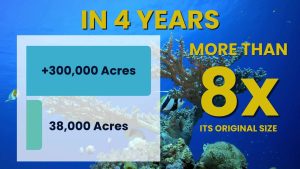 The Sapodilla Cayes Marine Reserve has exploded in size over the past four years, jumping from thirty-eight thousand acres to more than three hundred thousand. That’s eight times bigger than before. Managing such a massive area sounds impossible, but the team at TIDE didn’t shy away. After three years of research, they officially stepped in as co-managers in 2023, and they’re doing it with just seven rangers. Seven people patrol an area that huge, and without any direct presence from the Fisheries Department. TIDE’s Project Manager, Florencio Coc, takes us behind the scenes to show how his team makes it happen.
The Sapodilla Cayes Marine Reserve has exploded in size over the past four years, jumping from thirty-eight thousand acres to more than three hundred thousand. That’s eight times bigger than before. Managing such a massive area sounds impossible, but the team at TIDE didn’t shy away. After three years of research, they officially stepped in as co-managers in 2023, and they’re doing it with just seven rangers. Seven people patrol an area that huge, and without any direct presence from the Fisheries Department. TIDE’s Project Manager, Florencio Coc, takes us behind the scenes to show how his team makes it happen.
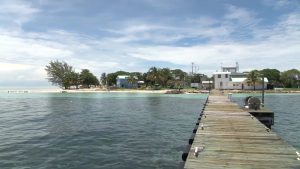 Florencio Coc, Project Manager, TIDE (File: July 2nd, 2025)
Florencio Coc, Project Manager, TIDE (File: July 2nd, 2025)
“Our mandate is to execute the fisheries guidelines. That is our mandate. So in terms of anything that has to do with illegal entry, that goes channeled on to the immigration officer. Anything else? Immigration officer or the Coast Guard, because again, the Coast Guard also has a mandate as. As us if we are not present here, the Coast Guard has the legal authority to make arrests the same for immigration. So anything else that falls under the Fair Fisheries, it is us that conducts.”
Keeping the Sapodilla Cayes Marine Reserve safe isn’t easy, and it’s not without danger. Many of the fishers crossing into Belizean waters come armed and aren’t afraid to resist arrest. Twice a day, two Coast Guard officers join TIDE patrols, making sure the team stays protected while doing their job. Lieutenant Allen Armstrong explains just how critical these joint operations are.

Allen Armstrong
Lt. Allen Armstrong, Belize Coast Guard (File: July 2nd, 2025)
“We also conduct what we call the Operation Lighthouse or better known as the Dotted Line Patrol. The Dotted Line patrol is whereby we conduct patrols from here out at Hunter’s Caye all the way to Sarstoon. This is along the equidistance line, so this is patrols that is conducted. At least four times per the month, so it’s one per week. Beside from that, we also conduct what we call the Corona Reef Patrols as well. The Corona Reef Patrol are better known as the Cayman Crown Patrol is also conducted once per week, so these patrol are conducted. Four times for the month as well. So, we’re looking at eight patrols at the post guard does within the Cayman Crown, and then along the dotted line for the entire month.”
The stakes are high: rich fishing grounds and pristine reefs draw not only Belizean fishers but also boats from across the border, often illegally. Conservation patrols battle to protect spawning sites for species like Nassau grouper, while international courts weigh sovereignty disputes.
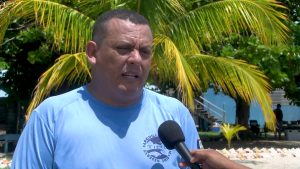
Leonardo Chavarria Jr.
Leonardo Chavarria Jr., Executive Director, TIDE (File: July 2nd, 2025)
“One of the primary concerns that we have is the issue of this by nature is a transboundary area. So, we have a lot of illegal fishing that is carried out by our Guatemalan and Honduran neighbors. So, we have fishing communities from Guatemalan and Honduras who are in close proximity, about forty-five minutes from here. And then they engage in illicit fishing activities. So they use gill nets, which are very destructive. They use long lines. They do night fishing. They use illicit spears for example. And so these type of things are already major concern to us because they do not fish like Belizean. These people, we have like hundreds of fishers that are utilizing these waters and doing so illegally.”
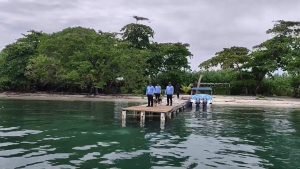 Today, at the Peace Palace in The Hague, judges are hearing arguments on whether Guatemala can step into the legal battle between Belize and Honduras over the Sapodilla Cayes. Now, let’s be clear, this isn’t about Guatemala’s own territorial claim against Belize. That case is still waiting for its turn. Today’s hearing is strictly about whether Guatemala gets a seat at the table in the separate dispute over those tiny but strategically important islands.
Today, at the Peace Palace in The Hague, judges are hearing arguments on whether Guatemala can step into the legal battle between Belize and Honduras over the Sapodilla Cayes. Now, let’s be clear, this isn’t about Guatemala’s own territorial claim against Belize. That case is still waiting for its turn. Today’s hearing is strictly about whether Guatemala gets a seat at the table in the separate dispute over those tiny but strategically important islands.
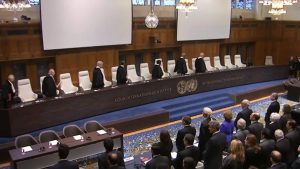 Eamon Courtenay, SC, Foreign Minister (File: December 15, 2023)
Eamon Courtenay, SC, Foreign Minister (File: December 15, 2023)
“We were not surprised by that, we expected them. The issues overlap and the main purpose for us bringing the case against Honduras was to have the sovereignty over those cayes and that area resolved finally, by the court. Now, Guatemala wants to join that case, they have applied. The court is going to make a determination.”
It’s a preliminary step, but one that could shape how this regional tug-of-war plays out.
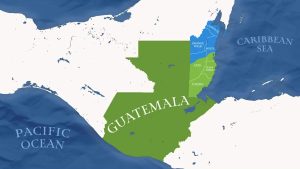 Eamon Courtenay, SC, Foreign Minister (File: October 24th, 2022)
Eamon Courtenay, SC, Foreign Minister (File: October 24th, 2022)
“Once the ICJ becomes aware of the claim by Honduras to the Sapodillas, there is a significant risk that the court would not delimit the maritime areas that appertain to the Sapodillas, thereby leaving unresolved a large part of our maritime entitlement. Indeed, the ICJ may decide not to pronounce on the sovereignty over the Sapodillas as well, even as between Belize and Guatemala. This would mean that sovereignty over a very important part of our sovereign domain, the Sapodillas and the maritime areas pertaining to it, will remain unresolved.”
The main case over Guatemala’s claim to Belize, land, islands, and maritime areas, is still in play. All the written arguments are done, but the next big step, oral hearings, hasn’t happened yet. So, while the paperwork is complete, the courtroom showdown is still to come. Isani Cayetano for News Five.




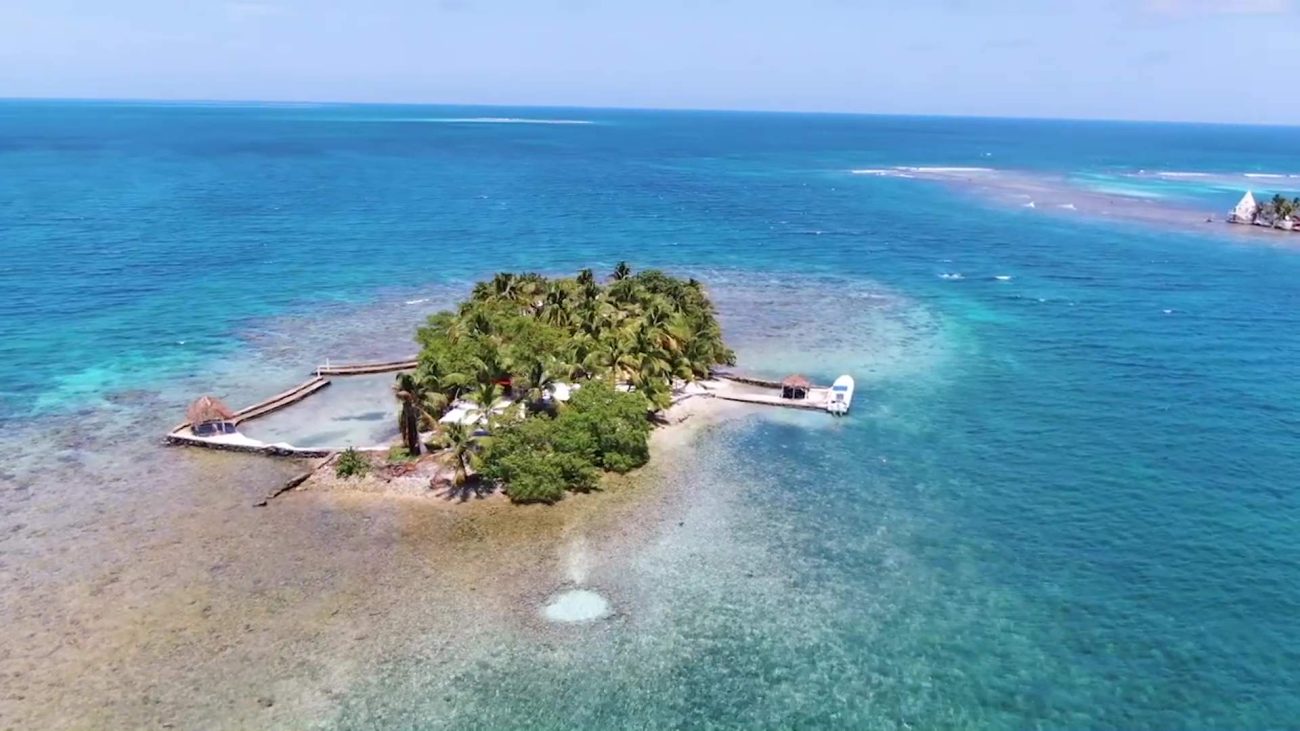

Facebook Comments